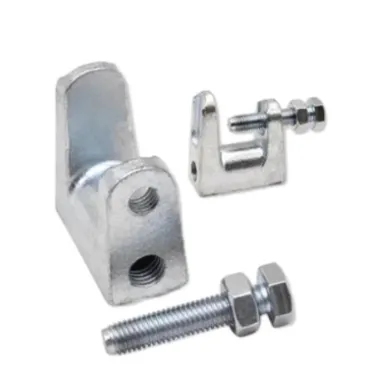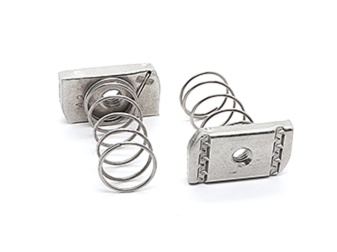Feb . 17, 2025 16:29 Back to list
bolt head types
Bolt heads come in a diverse array of types, each engineered to meet specific needs across various industries. Understanding these variations is crucial for ensuring optimal performance, structural integrity, and safety. While bolts may seem like simple components, their design nuances can carry significant implications.
Another key variant is the T-head bolt, which has a T-shaped head designed to fit into slots and channels. T-head bolts are frequently used in machine tool environments and in the construction of assembled products where other fastening elements may be unfeasible due to space constraints. For environments where security is paramount, such as public infrastructure or secure facilities, tamper-proof bolts with uniquely patterned heads, such as pin-head or snake eye, are utilized. These bolts afford an additional layer of security, as they require specific tools for installation and removal, thus reducing the risk of theft or tampering. Specialty bolts like the flange bolt integrate a washer-like surface, which distributes a load more evenly. This design is advantageous in bolted connections where material strength and distribution of force are critical, such as in automotive undercarriage assemblies. While understanding these different bolt head types is vital, selecting the suitable material and coating also plays a decisive role in bolt performance. Stainless steel is favored for its rust resistance and durability, while galvanized coatings provide corrosion protection in harsher environments. In certain applications, such as electronics or sensitive assemblies, non-metallic materials like nylon may be used to prevent electrical conduction and reduce weight. Certification and testing offer an indication of a bolt's quality and compliance with industry standards such as ANSI, ISO, or DIN. Ensuring that your bolts adhere to these specifications is not just about meeting regulatory requirements; it is about ensuring safety and longevity in your structures or products. The expertise required to select the appropriate bolt head encompasses understanding load ratings, materials science, and the mechanics of fastening. Consulting with professionals and leveraging technological tools like CAD design can save time, reduce costs, and mitigate risks associated with improper bolt selection. Building trust and authority in bolt selection and application extends to following proper documentation processes, validating credentials, and providing transparent information about the bolt's life cycle. In an industry where precision and reliability can define success, the integrity of your fastening components should never be compromised. With the right choice of bolt head types, combined with expert advice and quality assurance, your projects are primed for safety, efficiency, and success.


Another key variant is the T-head bolt, which has a T-shaped head designed to fit into slots and channels. T-head bolts are frequently used in machine tool environments and in the construction of assembled products where other fastening elements may be unfeasible due to space constraints. For environments where security is paramount, such as public infrastructure or secure facilities, tamper-proof bolts with uniquely patterned heads, such as pin-head or snake eye, are utilized. These bolts afford an additional layer of security, as they require specific tools for installation and removal, thus reducing the risk of theft or tampering. Specialty bolts like the flange bolt integrate a washer-like surface, which distributes a load more evenly. This design is advantageous in bolted connections where material strength and distribution of force are critical, such as in automotive undercarriage assemblies. While understanding these different bolt head types is vital, selecting the suitable material and coating also plays a decisive role in bolt performance. Stainless steel is favored for its rust resistance and durability, while galvanized coatings provide corrosion protection in harsher environments. In certain applications, such as electronics or sensitive assemblies, non-metallic materials like nylon may be used to prevent electrical conduction and reduce weight. Certification and testing offer an indication of a bolt's quality and compliance with industry standards such as ANSI, ISO, or DIN. Ensuring that your bolts adhere to these specifications is not just about meeting regulatory requirements; it is about ensuring safety and longevity in your structures or products. The expertise required to select the appropriate bolt head encompasses understanding load ratings, materials science, and the mechanics of fastening. Consulting with professionals and leveraging technological tools like CAD design can save time, reduce costs, and mitigate risks associated with improper bolt selection. Building trust and authority in bolt selection and application extends to following proper documentation processes, validating credentials, and providing transparent information about the bolt's life cycle. In an industry where precision and reliability can define success, the integrity of your fastening components should never be compromised. With the right choice of bolt head types, combined with expert advice and quality assurance, your projects are primed for safety, efficiency, and success.
Next:


